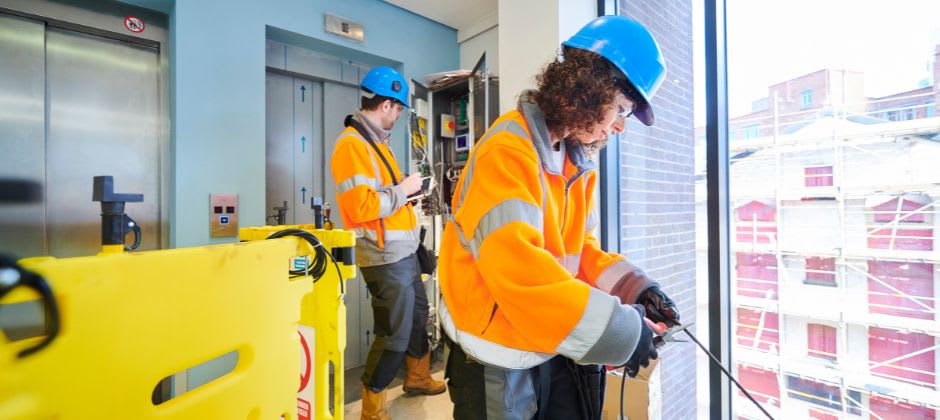What does a Lift Engineer do?
Lift engineers, also known as lift technicians, install, refurbish, service and repair electrical traction and hydraulic lift equipment. They are employed by specialist lift maintenance and building services companies, local authorities, hospitals and educational institutions. They deal with all types of lifts, including:
- Passenger, goods and service lifts – found in offices, hotels, railway stations and airports
- Loading platforms and scissor lifts - used to load/unload and move materials, machinery and products around a factory floor, storage depot or port
- Stairlifts – used for mobility around the house and access to building entrances
- Vehicle mounted – used in personal and commercial transport
- Ceiling track hoists – used by carers to aid patient mobility in domestic households, nursing homes and health centres
- Dumb waiters – used to transfer food in hotels and restaurants
- Escalators – found in shopping centres, transport terminals and offices.
Lift engineers may also be involved in lift design, using CAD software to produce bespoke products, for example, panoramic lifts (lifts with glass panels) often found in an atrium or on the outside of a building.
Typical duties for lift engineers include:
- Planned Preventive Maintenance (PPM) - carrying out scheduled routine inspections and checks on electrical equipment, gears, hydraulics, drive systems, motors, overload detection devices, brakes, doors and locks; diagnosing defects and carrying out minor repairs; making recommendations and arrangements to deal with more serious repairs.
- Emergency call out - responding to out-of-hours breakdowns; carrying out repairs or isolating problems until a fuller service can be performed.
- Installation – commissioning and fitting out lifts, lifting gear, lift wells and ancillary equipment; and demonstrating equipment operation.
- Surveys – undertaking inspection and assessment of existing lift equipment to ensure compliance with relevant legislation and directives, including Lifting Operations and Lifting Equipment Regulations 1998 (LOLER), Disability Discrimination Act 1995 (in relation to equal access to goods, services and facilities) and Lifts Guidelines (LG1); making recommendations for modifications or new installations; and producing quotes for jobs.
- Refurbishment – replacing or upgrading lift interiors, such as flooring, panel displays, communication systems, buttons, lighting and finishes.
- Administration - updating work records both written and computerised; analysing call out patterns or trends to identify and isolate defects, and to anticipate future problems; produce inspection and risk assessment reports, and documentation on all jobs for insurance and legal purposes.
What is the working environment like for Lift Engineers?
Lift engineers work 40 hours a week, Monday to Friday. Overtime is common and many engineers work on a call-out rota covering 24 hours a day, 365 days a year.
Engineers travel from site to site and conditions will depend on the type of building housing the lift equipment. Work can be oily, dirty and hot, and engineers may have to work in confined spaces, particularly on older systems.
A company vehicle and uniform is usually provided. A driving licence is normally essential.
What does it take to become a Lift Engineer?
As a lift engineer, you should:
- Have an aptitude for electrical and/or mechanical work
- Have excellent troubleshooting skills
- Be able to understand engineering drawings and principles
- Have good communication and customer care skills
- Be able to plan and organise workloads
- Be able to work without close supervision
- Be computer literate for updating records and writing reports (and familiar with CAD packages if involved in design work)
- Be willing to work flexibly
- Be fully aware of statutory requirements and industry guidelines regarding health and safety, and inspections.
Lift Engineers job opportunities
Lift engineers job prospects are good, as lift engineers are employed by a wide variety of organisations in the public and private sector.
With experience and further engineering training, there may be opportunities to progress to supervisory management, technical sales or engineering design roles.
Skilled engineers at technician level are widely sought after in other industries, such as manufacturing and engineering construction, so there may be scope to move into related fields.
Other options include training and assessment, either within a company or as a freelance contractor.
Find out the average lift engineer salary and job prospects!
Check out our job and salary section.

